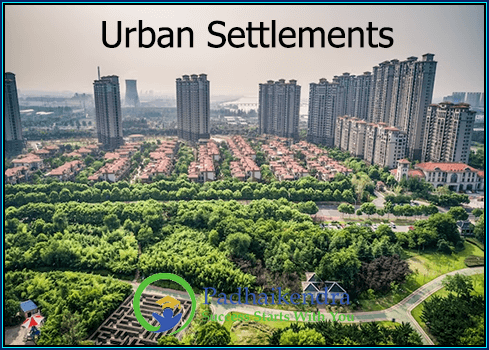Urban settlements refer to areas where buildings and infrastructure are densely located and where a large proportion of the population is engaged in non-agricultural activities such as manufacturing, trade, and services. These settlements are often characterized by high population density, a diverse range of economic activities, and complex social and cultural dynamics.
Urban settlements can take many different forms, ranging from sprawling cities to small towns and suburbs. Some common features of urban settlements include:
- High population density: Urban settlements are often characterized by a high population density, with a large number of people living in a relatively small area.
- Diverse economic activities: Urban settlements are often centers of economic activity, with a diverse range of industries and businesses. This can include manufacturing, trade, finance, and a range of service industries.
- Infrastructure: Urban settlements typically have well-developed infrastructure, including roads, public transportation, water and sanitation systems, and public services such as schools and hospitals.
- Cultural diversity: Urban settlements are often characterized by a high degree of cultural diversity, with people from different ethnic, racial, and socioeconomic backgrounds living and working together.
- Land use: Urban settlements often have a mix of land uses, including residential, commercial, and industrial areas. The spatial distribution of these land uses can have significant impacts on the quality of life in urban areas, including access to jobs, services, and green space.
Overall, urban settlements are complex and dynamic environments that are shaped by a wide range of social, economic, and environmental factors. Understanding these factors is essential for the design of sustainable and livable cities that can meet the needs of their diverse populations.





